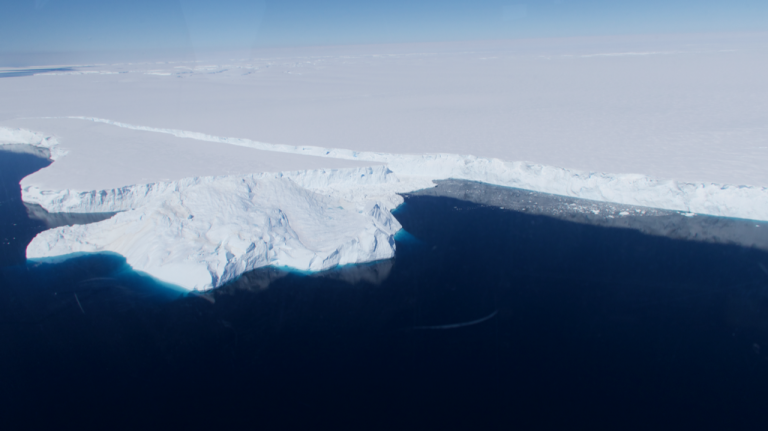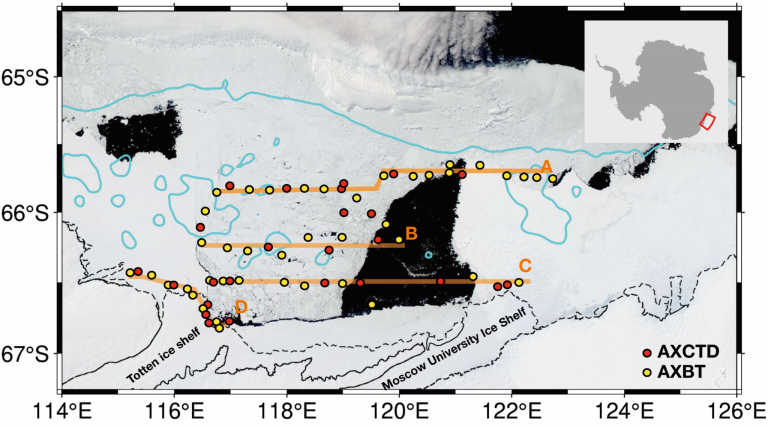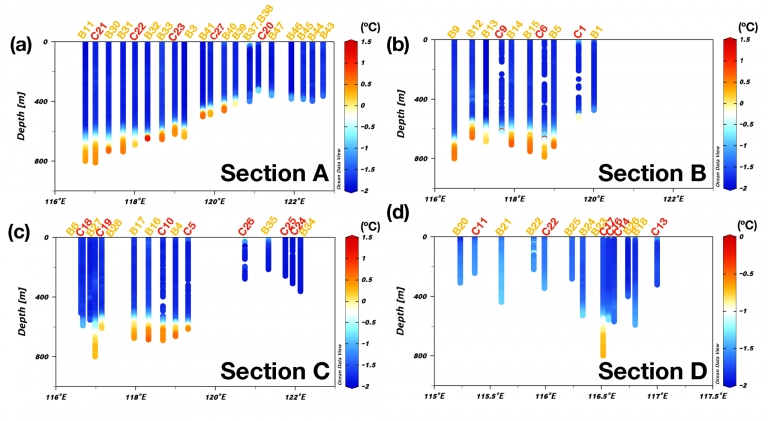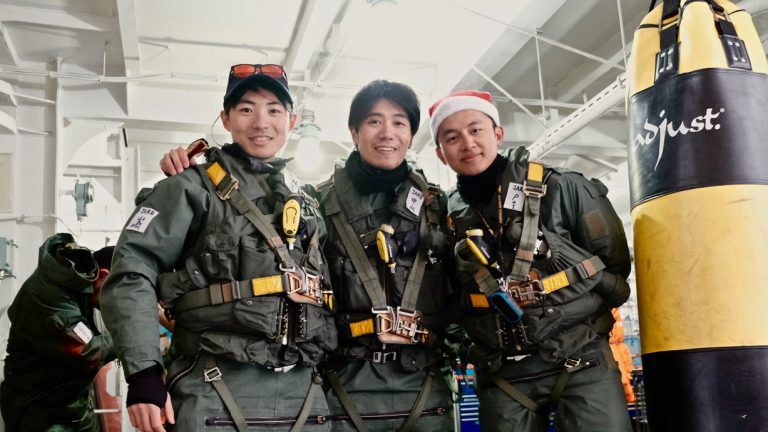Helicopter-based observations uncover warm ocean flows toward Totten Ice Shelf in Southeast Antarctica
Joint press release by the Australian Antarctic Program Partnership (AAPP), National Institute of Polar Research, and Hokkaido University.
An international team of scientists has successfully conducted large-scale helicopter-based observations along the coast of East Antarctica and has identified pathways through which warm ocean water flows from the open ocean into ice shelf cavities for the first time.

During six days of observations, the team was able to retrieve temperature and other data at 67 sites covering the entire continental shelf region off the Totten Ice Shelf, the floating portion of the Totten Glacier. The study enabled the team to obtain an overall picture of warm ocean water flowing into the ice shelf cavity.

The Totten Glacier has attracted global attention because of the sheer scope of the environmental impacts if the glacier were to melt entirely: global sea levels could be raised by nearly four meters. It is thus necessary to observe the entire continental shelf region to understand the pathways and mechanisms of warm water mass inflow. However, such observations have been historically hindered by the region’s intense sea ice and icebergs.
The team, including Assistant Professor Yoshihiro Nakayama and Associate Professor Shigeru Aoki of Hokkaido University’s Institute of Low Temperature Science, conducted helicopter-based observations with cooperation by Japan’s Maritime Self-Defense Force as part of the 61st Japanese Antarctic Research Expedition (JARE61).
Researchers took a CH-101 helicopter from the icebreaker Shirase to observation sites where they dropped two kinds of ocean observation sensors: AXCTD (Airborne eXpendable Conductivity, Temperature, and Depth) and AXBT (Airborne Bathy-Thermograph). The team was able to investigate underwater temperatures and salinity using data from the sensors.
The team found that broad ocean heat—stretching across the 150-kilometer range between the longitudes of 116.5° east and 120.5° east—was intruding toward the shelf. Seawater with a temperature of about 1 °C higher than the freezing temperature was observed between 50 and 100 meters above the seabed. This showed, for the first time, the overall picture of warm water mass flowing toward the Totten Ice Shelf.
This study also demonstrated the efficacy of using helicopters in conducting such research. They are cheaper and faster than operating an icebreaker, have superb maneuverability, and are not affected by sea ice conditions. The identified pathways can be observed in detail by icebreakers.

This study was conducted jointly by the Institute of Low Temperature Science; Hokkaido University, the Australian Antarctic Program Partnership at the University of Tasmania (Australia); Scripps Institution of Oceanography (U.S.A.); University of Texas at Austin (U.S.A.); the National Institute of Polar Research (Japan); Marine Works Japan Ltd. (Japan) and National Institute of Technology, Tomakomai College (Japan). The results of the study were published in the online edition of Geophysical Research Letters, a U.S. scientific journal on September 11, 2023.

Original article:
Yoshihiro Nakayama, et al. Helicopter-based ocean observations capture broad ocean intrusions towards the Totten Ice Shelf. Geophysical Research Letters. September 11, 2023.
DOI: 10.1029/2022GL097864
Contacts at Hokkaido University:
Assistant Professor Yoshihiro Nakayama
Institute of Low Temperature Science
Hokkaido University
Email: Yoshihiro.Nakayama[at]lowtem.hokudai.ac.jp
Sohail Keegan Pinto
Public Relations & Communications Division
Office of Public Relations and Social Collaboration
Hokkaido University
Tel: +81-11-706-2186
Email: en-press[at]general.hokudai.ac.jp
Contacts at the Australian Antarctic Program Partnership (UTAS):
Dr. Pat Wongpan
Tel: +61-3-6226-3276
Email: pat.wongpan[at]utas.edu.au
Australian Antarctic Program Partnership
Tel: +61-3-6226-7844
Email: aapp.enquiries[at]utas.edu.au
Contacts at National Institute of Polar Research:
Public Relations Section
National Institute of Polar Research
Email: kofositu[at]nipr.ac.jp
